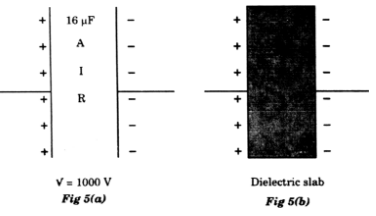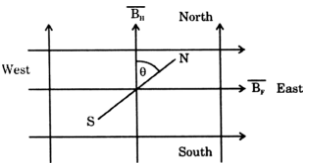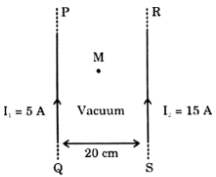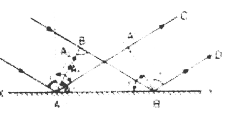 Short Answer Type
Short Answer TypeAn isolated 16 μF parallel plate air capacitor has a potential differences of 1000 V (Figure 5 a). A dielectric slab having relative permittivity (i.e. dielectric constant) = 5 is introduced to fill the space between the two plates com pletely. (Figure 5 b). Calculate:
(i) The new capacitance of the capacitor.
(ii) The new potential differences between the two plates of the capacitor
An electron revolves around the nucleus of hydrogen atom in a circular orbit of radius 5 x 10-11 m. Calculate
(i) Intensity of electric field of the nucleus at the position of the electron.
(ii) Electrostatic potential energy of the hydrogen nucleus and electron system.
In the circuit shown below, PQ is a uniform metallic wire of length 4 m and resistance 20 Ω. Battery B has an emf of 10V and internal resistance of 1 Ω. J is a jockey or slide contact. Resistance of the ammeter and connecting wires is negligible.
(i) When the jockey J does not touch the wire PQ, what is the reading of ammeter A?
(ii) Where should the jockey J be pressed on the wire PQ so that the galvanometer G shows no deflection?
 is kept in two uniform and perpendicular magnetic fields
is kept in two uniform and perpendicular magnetic fields  as shown below:
as shown below:
(i) What is the effect of each of the magnetic fields on the needle?
on the needle?
(ii) When the needle is in equilibrium, obtain an expression for an angle θ made by the needle with  in terms
in terms  of only.
of only.
 at a point M which lies exactly midway between PQ and RS.
at a point M which lies exactly midway between PQ and RS. 
Laws of Reflection:
Let XY be a reflecting surface at which a wavefront is being incident obliquely.
Let v be the speed of the wavefront and at the time t =0, the wavefront touches the surface XY at A.
After time t, the point B of wavefront reaches the point B’ of the surface.
According to Huygen’s principle each point 'f' wavefront strikes the reflecting surface, then due to presence of reflecting surface.
It cannot advance further; but the secondary wavelet originating from point A begins to spread in all directions in the first medium with speed v.
As the wavefront AB advances further, its points A1, A2, A3... etc. strike the reflecting surface successively and send spherical secondary wavelets in first medium.
First of all the secondary wavelet starts from point A and traverses distance AA’(=vt) in first medium in time t.
The point B of wavefront, after travelling a distance BB’ reaches point B’ (of the surface), from where the secondary wavelet now starts.
Now taking A as centre we draw a spherical arc of radius AA’ (= vt) and draw tangent A’B’ on this arc from point B.
As the incident wavefront AB advances, the secondary wavelets starting from points between wavefront A’B’ represents the new position of AB, i.e., A’B’ is the reflected wavefront corresponding to incident wavefront AB.
Now in right-angled triangles ABB’ and AA’B’
Angle ABB’ = AA’B’ (both are equal to 90°)
side BB’ = side AA’ (both are equal to vt) and side AB’ is common i.e. both triangles are congruent.
Angle BAB - angle AB’A’
That is, incident wavefront AB and reflected wavefront A’B’ make equal angles with the reflecting surface XY.
As the rays are always normal to the wavefront, therefore the incident and the reflected rays make equal angles with the normal drawn on the surface XY.
i.e., angle of incidence I = angle of reflection r
This is the second law of reflection.
